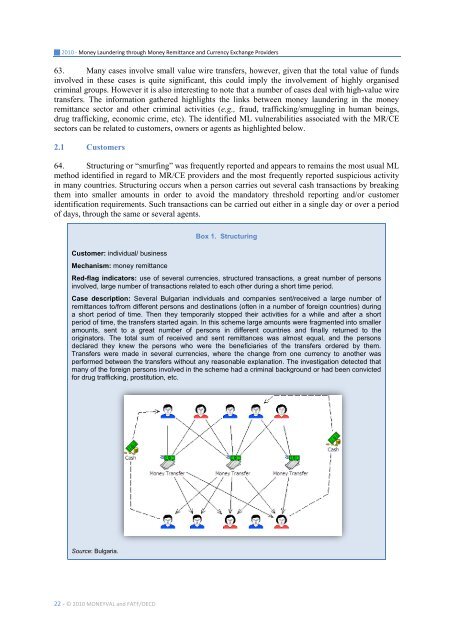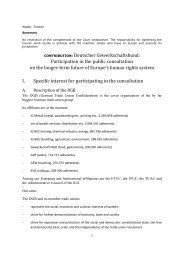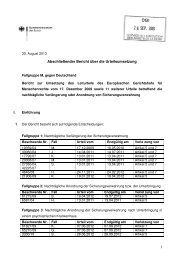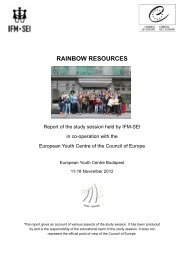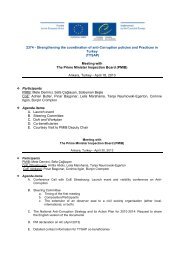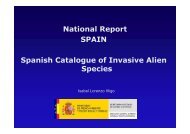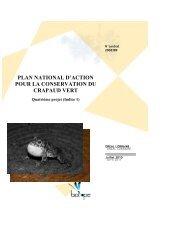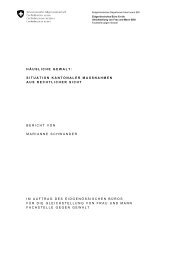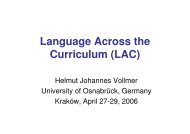Money laundering through money remittance ... - Council of Europe
Money laundering through money remittance ... - Council of Europe
Money laundering through money remittance ... - Council of Europe
Create successful ePaper yourself
Turn your PDF publications into a flip-book with our unique Google optimized e-Paper software.
2010 - <strong>Money</strong> Laundering <strong>through</strong> <strong>Money</strong> Remittance and Currency Exchange Providers<br />
63. Many cases involve small value wire transfers, however, given that the total value <strong>of</strong> funds<br />
involved in these cases is quite significant, this could imply the involvement <strong>of</strong> highly organised<br />
criminal groups. However it is also interesting to note that a number <strong>of</strong> cases deal with high-value wire<br />
transfers. The information gathered highlights the links between <strong>money</strong> <strong>laundering</strong> in the <strong>money</strong><br />
<strong>remittance</strong> sector and other criminal activities (e.g., fraud, trafficking/smuggling in human beings,<br />
drug trafficking, economic crime, etc). The identified ML vulnerabilities associated with the MR/CE<br />
sectors can be related to customers, owners or agents as highlighted below.<br />
2.1 Customers<br />
64. Structuring or “smurfing” was frequently reported and appears to remains the most usual ML<br />
method identified in regard to MR/CE providers and the most frequently reported suspicious activity<br />
in many countries. Structuring occurs when a person carries out several cash transactions by breaking<br />
them into smaller amounts in order to avoid the mandatory threshold reporting and/or customer<br />
identification requirements. Such transactions can be carried out either in a single day or over a period<br />
<strong>of</strong> days, <strong>through</strong> the same or several agents.<br />
Customer: individual/ business<br />
Mechanism: <strong>money</strong> <strong>remittance</strong><br />
22 - © 2010 MONEYVAL and FATF/OECD<br />
Box 1. Structuring<br />
Red-flag indicators: use <strong>of</strong> several currencies, structured transactions, a great number <strong>of</strong> persons<br />
involved, large number <strong>of</strong> transactions related to each other during a short time period.<br />
Case description: Several Bulgarian individuals and companies sent/received a large number <strong>of</strong><br />
<strong>remittance</strong>s to/from different persons and destinations (<strong>of</strong>ten in a number <strong>of</strong> foreign countries) during<br />
a short period <strong>of</strong> time. Then they temporarily stopped their activities for a while and after a short<br />
period <strong>of</strong> time, the transfers started again. In this scheme large amounts were fragmented into smaller<br />
amounts, sent to a great number <strong>of</strong> persons in different countries and finally returned to the<br />
originators. The total sum <strong>of</strong> received and sent <strong>remittance</strong>s was almost equal, and the persons<br />
declared they knew the persons who were the beneficiaries <strong>of</strong> the transfers ordered by them.<br />
Transfers were made in several currencies, where the change from one currency to another was<br />
performed between the transfers without any reasonable explanation. The investigation detected that<br />
many <strong>of</strong> the foreign persons involved in the scheme had a criminal background or had been convicted<br />
for drug trafficking, prostitution, etc.<br />
Source: Bulgaria.


